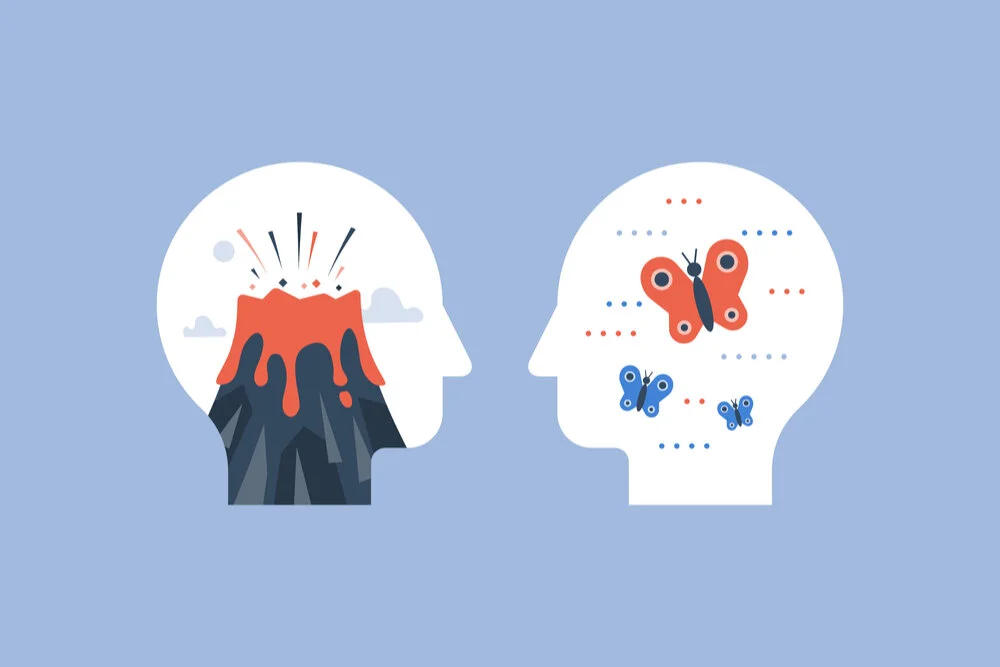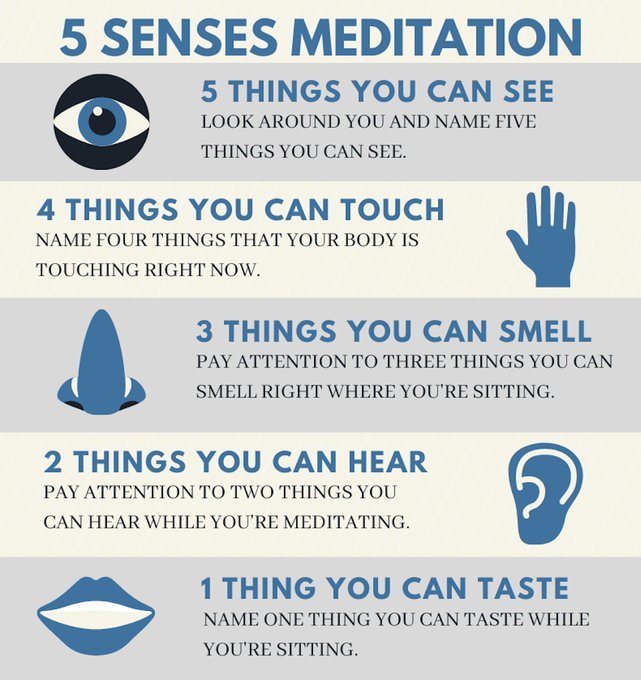5 Senses Mindfulness: How to Calm a Panic Attack
In a world full of noise, distraction, and constant demands, it’s easy to lose touch with the present moment. We spend so much time caught in thoughts about the past or worries about the future that we forget how to just be. In this post, I will draw on my lived experience with mental illness and recovery to explore the power of becoming present state aware, using a technique called 5 Senses Mindfulness, especially for calming down a panic attack. We will talk about what it is, and then go through a 5 Senses Mindfulness Script.
Becoming present state aware is a practice of tuning in to your body, emotions, and surroundings as they are, right now. Presence is not just a mindfulness buzzword; it’s a lifeline for clarity, calm, and connection. 5 Senses Mindfulness is a simple yet powerful grounding technique that brings your attention into the present moment by focusing on your sensory experience.
- Ch: 1.1 of How To Get Your Sh!t Together -
“Do not stay in the past, do not dream of the future, concentrate on the present moment.” – Buddha
The first time I had a panic attack, I thought I was going to die. I hadn’t yet heard of the 5 Senses Mindfulness technique, so I had no anchor to the present moment, and my mind was a rudderless ship drifting out to sea.
I was driving through an unfamiliar part of the city during peak hour. My GPS had taken me down a series of tight back roads. I was on edge but was still coping; that was until a garbage truck decided to begin its operations up ahead.
There was no exact triggering moment, just a quick, overwhelming onslaught of symptoms. Tight chest, sweating, heart palpations, racing thoughts, and a feeling of impending doom.
At first, I attempted to ignore it, hoping it would go away on its own. It didn’t. These symptoms intensified as I became more and more alarmed about them, falling into a full-blown panic attack spiral.
I rushed into an empty parking lot, got out of the car and collapsed onto all fours to regain my breath. I then got back into the car, reclined my seat, and rested. It took at least an hour to feel comfortable enough to drive again.
It was one of the scariest moments of my life.
Panic attacks are part of my generalised anxiety disorder symptomology. At my worst, I suffered from an extreme attack at least once a week.
Thankfully, the ‘5 Senses Mindfulness’, also known as ‘Present State Awareness’, along with the strategies outlined in the rest of Part 1, has caused a dramatic reduction in my overall anxiety levels, as well as the number of panic attacks I suffer.
Accepting Panic Attacks
The first solution is to ‘acknowledge and accept’ that you are having a panic attack. I know that it may seem counter-intuitive to ‘just accept’ that it is happening, but that is exactly what you need to do. Accepting panic attacks is the first step to overcoming them. Once the attack begins, it is happening, and nothing will stop it. You must wait for the storm to pass. Unfortunately, the symptoms of a panic attack often increase when we become anxious about the fact that we are having the attack.
When I realise that I am about to have a panic attack, I take the following actions: Firstly, I stop what I am doing and excuse myself wherever possible. Accepting panic attacks is the first step, and the second is to give them space. Then, I will say to myself,
“I know what these symptoms mean, I am having a panic attack. I have had them before and although they are not pleasant, I survived. In a short time, they will pass, just like every other panic attack that I have ever had.”
From there I will do some relaxation exercises including meditation, ten relaxation breaths, as well as attempt to become present state aware:
5 Senses Mindfulness: a Present Moment Awareness Exercise
5 Senses Mindfulness is when you focus all of your attention on your senses in the present moment. 5 Senses Mindfulness is a simple yet powerful grounding technique that brings your attention into the present moment by focusing on your sensory experience. It involves gently tuning in to what you can see, hear, feel, smell, and taste, one sense at a time.
This practice helps quiet racing thoughts, reduce anxiety, and reconnect you with your body and environment. By shifting your awareness to immediate, tangible sensations, you create a moment of calm presence, which can be especially helpful during stress, overwhelm, or emotional dysregulation. It's a practical tool you can use anytime, anywhere to anchor yourself in the here and now.
So the goal of this present moment awareness exercise is to focus your attention on your senses. What you can see, hear, taste, touch and smell. By focusing on your five senses, you are directing your attention out of your head and into the present moment. You are grounding yourself in what is happening now, not what was happening or what you think may happen. Try 5 Senses Mindfulness now:
TAKE ACTION - 5 Senses Mindfulness Script
Use this 5 Senses Mindfulness Script anytime you need it:
- Take five slow and deep breaths, in through the nose and out through the mouth. Don’t force this breathing pattern, it should feel comfortable and not strained. Continue breathing this way with five breaths for each sense.
- Focus your attention onto what you can feel. What does the ground feel like? Can you feel the wind? Is there any pressure, tension or sensation coming from inside your body? What do your clothes feel like? Are you hungry? Do you feel hot or cold? Have you felt anything new?
- Move your attention onto what you can see. Notice the colours, lines, shapes, textures. Notice the play of light and the casting of shadows. Have you seen anything new?
- Move your attention onto what you can hear. What sounds are coming to your ears? Are they natural or man-made? Can you hear music or a conversation? What is the pitch and tone? Is it loud or quiet? Have you heard anything new?
- Move your attention onto what you can smell. Focus on the air coming into your nose, are there any smells that you instantly recognise? Are there some that you can’t place? Is there an undertone? Have you smelt anything new?
- Move your attention onto what you can taste. Focus on your mouth and tongue, are there any residual tastes in your mouth? Perhaps you can still taste some of the stronger flavours from your last meal or toothpaste. Have you tasted anything new?
Cycle through the 5 Senses Mindfulness Script three times before stopping.
—
The 5 Senses Mindfulness activity gets you out of your head and into the present moment. It is one of the quickest and easiest methods of becoming mindful.
I like to use the 5 Senses Mindfulness Script throughout the day to ground myself. I don’t always go through the whole process described above. Just a quick acknowledgement of the feelings from my feet, and I move on.
These quick breaks basically keep mental afflictions* at bay.
Anxious thought pops in, “What can I feel?”
Feeling of regret arises, “What can I see?”
Ruminating over a conversation, “What can I hear?”
Notice a shortness of breath, “What can I smell?”
Tension in muscles rise, “What can I taste?”
* The term ‘mental affliction’ is used throughout this book. It refers to a negative mental state. This could be a general life stressor, worry, mood change or other bad feelings. It can also include one or more of the symptoms of mental illness
—
Frequently Asked Questions
Q) How slow should I breathe?
A) There is no perfect rhythm or number of seconds required to hold and release the breath. Just aim for slightly slower and deeper than normal.
Q) Do I have to cycle through each sense, or can I focus on just one or two?
A) Either option is fine, provided you stay focused on the sensations coming in for the duration of the activity.
If I choose only one sense, I find that I lose focus and slip into thought and rumination. By switching, I am better able to stay focused on the physical sensations that my body is picking up.
Experiment and choose the combination that best works for you.
Q) What if I can’t calm down enough to focus on my senses at all?
A) If you are having a strong panic attack the first thing to do is acknowledge and accept that it is happening and then calmly take action.
You could try altering which senses you are focusing on and for how long. You may find that during a panic attack you need to cycle through the senses very slowly (or extremely quickly) to be effective.
Speaking out loud also helps: “I can feel the carpet with my feet. It is soft.”
As always, speaking to a professional therapist is recommended.
Resources
The Mind Illuminated - John Yates
Mindfulness In Plain English - Bhante Gunaratana
Summary
By focusing on your senses, you get out of your head and into the present moment. What can you see, hear, taste, touch and smell right now? Focus on that! The 5 Senses Mindfulness Script always helps.
Read more:
Meditation - The Single Best Thing You Can Do For Your Mental State Every Day
Destroy Anxious Thoughts With Specificity
Read another chapter from How To Get Your Sh!t Together
Out now: eBook, Paperback & Audible

